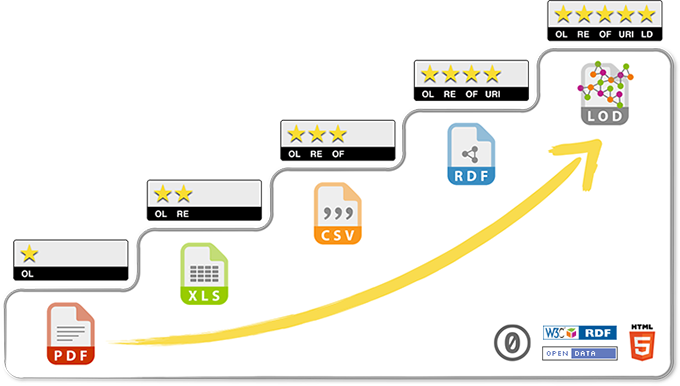5-Star Open Data

The 5-star Open Data Model defines the quality of data, in particular with regard to its technical openness and interoperability. Accordingly, there are five consecutive levels, each of which is assigned criteria that a data set must meet. For each level fulfilled, the data set receives an asterisk.
A 3-star rating meets basic requirements of the Open Definition, namely making it available under an open license (OL star 1), using a machine-readable (RE star 2) and open, non-proprietary (OF star 3) data format.
Optimum usability for open data is given if these are retrievable with unique identifiers (i.e. URIs) (URI star 4) and networked with other data (LD star 5). 5-star data allow a contextualized interpretation and can therefore answer more complex questions than would be the case with an isolated single data set.
Networking and contextualizing data requires interoperability in many areas, as explained in the last section. Not only individual data sets, but also entire data catalogs can be automatically and systematically searched, processed and networked (syntactic interoperability) using a so-called Web API (e.g. REST) and machine-readable data exchange formats such as XML and JSON. In this context, CKAN has established itself as the leading catalog software for open data portals. Semantic Web technologies such as RDF, OWL and SPARQL can also be used to technically implement abstract data models and standards-based specifications (semantic and organizational interoperability). The Data Catalog Vocabulary (DCAT), an RDF-based web standard of the W3C, plays an important role here. DCAT is used in particular for Open Government Data portals within the EU (see section Open Government Data/DCAT-AP).
For further information please read 5stardata.info.
The e-learning offer of the European Data Portal covers the 5-star model in Module 10 - How useful is my data? and Module 13 - Linking the 'web of data'.
